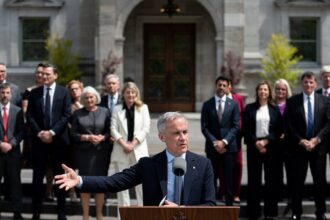In a decisive move that signals growing economic tensions, Canada announced sweeping new tariffs on steel products originating from China on Thursday, marking a significant shift in trade policy between the two nations. The decision, which follows months of industry pressure and economic assessment, aims to protect Canadian steel producers from what officials describe as “harmful market distortions” created by Chinese manufacturing practices.
Finance Minister Chrystia Freeland unveiled the measures alongside Innovation Minister François-Philippe Champagne, emphasizing that the 25% surtax will apply to steel products from countries that purchase Chinese steel and subsequently export it to Canada, effectively closing a loophole that has allowed Chinese steel to circumvent existing trade barriers.
“We are acting to protect Canadian workers and Canadian businesses from unfair competition,” Freeland stated during the announcement in Hamilton, Ontario—a city with deep ties to Canada’s steel industry. “These measures are about ensuring a level playing field in a sector that employs thousands of Canadians and forms the backbone of our manufacturing capacity.”
The new policy specifically targets cold-rolled steel, corrosion-resistant steel, and steel concrete reinforcing bar—products that have seen significant price depression due to global oversupply, much of it attributed to China’s production capacity. According to CO24 Business analysis, Chinese steel production reached record levels in 2023 despite slowing domestic demand, leading to increased exports that have disrupted international markets.
Industry representatives from the Canadian Steel Producers Association welcomed the announcement, with organization president Catherine Cobden calling it “a necessary step to address the existential threat posed by subsidized Chinese overcapacity.” Steel production in Canada supports approximately 123,000 direct and indirect jobs and contributes $15 billion annually to the country’s GDP.
The decision aligns Canada with similar measures implemented by key trading partners. The United States maintained 25% tariffs on Chinese steel imports from the Trump administration through President Biden’s term, while the European Union recently strengthened its own protective measures against indirect Chinese steel imports.
Economic analysts suggest the timing is strategic, coming as Canada News reports show the country’s manufacturing sector has struggled with post-pandemic recovery. “This isn’t just about steel,” explains Dr. Martin Reynolds, economist at the University of Toronto. “It’s about Canada taking a more assertive stance on economic security in critical sectors while signaling to Beijing that unfair trade practices will face consequences.”
The Chinese embassy in Ottawa responded swiftly, calling the measures “protectionist” and warning they could damage bilateral relations already strained by diplomatic tensions. Embassy spokesperson Lin Wei stated that China “reserves the right to take corresponding measures to safeguard its legitimate rights and interests.”
These tariffs represent the latest development in increasingly complex World News dynamics between Western economies and China. Beyond immediate economic impacts, they reflect growing concerns about economic dependency, supply chain resilience, and industrial policy that have intensified since the pandemic.
For Canadian consumers, the effects may be mixed. While potential price increases for steel-intensive products like appliances and automobiles could follow, advocates argue the measures will ultimately preserve domestic manufacturing capacity and employment.
As global trade patterns continue to evolve amid geopolitical tensions, one question remains particularly pertinent: Are we witnessing the beginning of a fundamental restructuring of international trade relationships, or simply another chapter in the cyclical nature of economic protectionism that has characterized global commerce for decades?

























